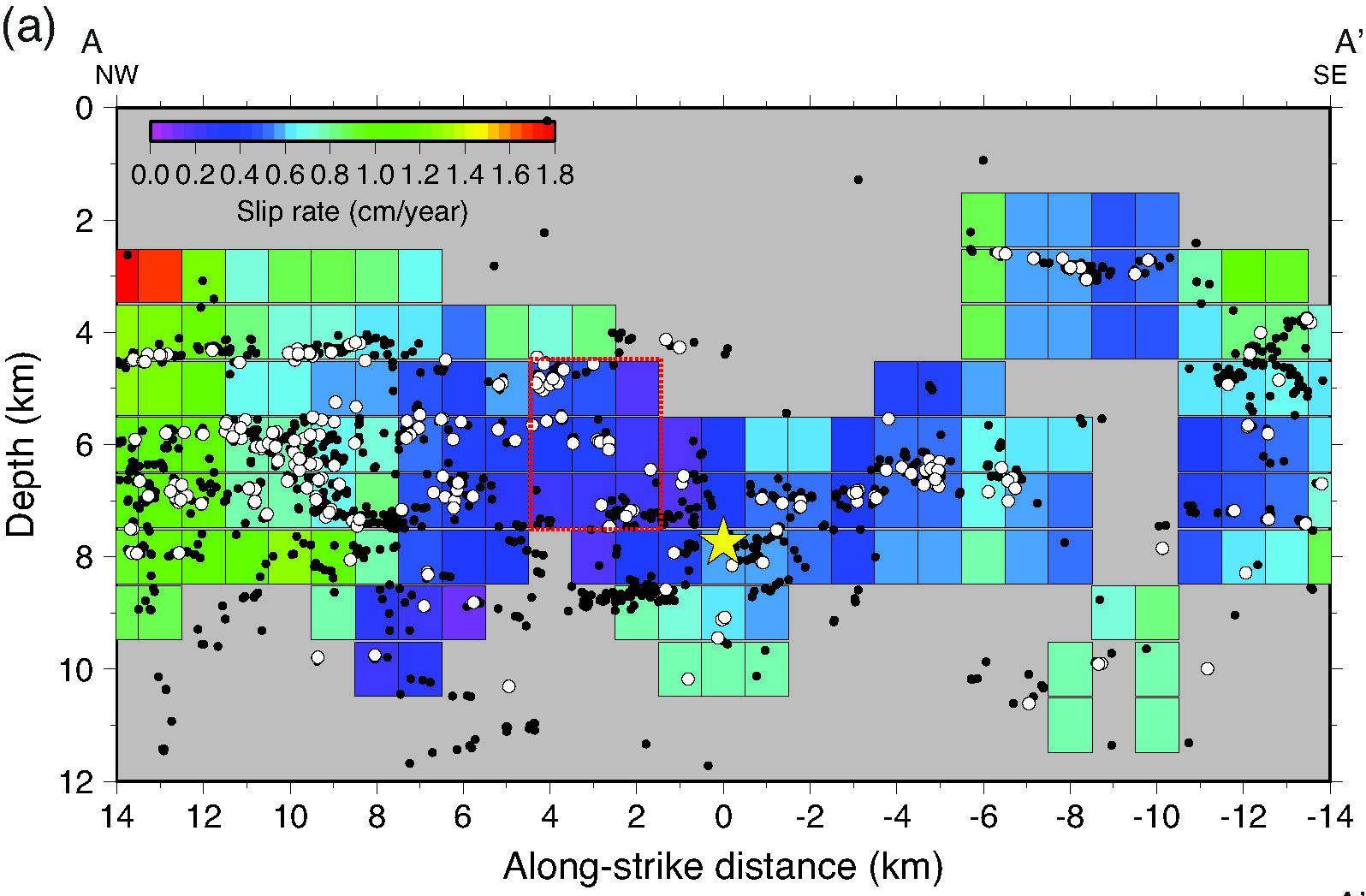Figure above: Spatial variation in slip rate during 1984-1998 inferred from characteristically repeating microearthquakes. The 1989 Loma Prieta earthquake led to a long-term acceleration of fault slip. The yellow star is the 1998 Mw 5.1 SJB earthquake.
Researchers: Roland Burgmann, Taka'aki Taira, and Robert M. Nadeau (Berkeley Seismological Laboratory, University of California, Berkeley)
Faults that are under stress from moving plates can release those stresses all at once, causing an earth-shaking quake. Abrupt movements, however, aren’t the only option: a fault can creep along in a style scientists call slow, or aseismic, slip. In this case, stress is released like steam escaping a kettle, a little bit at a time. Understanding how often aseismic versus seismic slip occurs on a fault can be hard to determine. Now, we have looked at the timing and location of slip on faults with a history of earthquakes to determine how frequently a fault can move with aseismic slipping.
Our team examined the San Juan Bautista area—a locale in California where lots of instruments monitor the San Andreas fault. We found that after the 1998 Mw 5.1 earthquake in the area, the fault moved very differently in different parts. There were areas where the fault was locked, similar to how a non-slip sneaker sole might grip the ground. Some parts had slow, creeping movement, which actually led to multiple microearthquakes over the following year. Interestingly, the pattern of slipping on faults was unevenly spread, with larger movements (up to 9 cm) concentrated in an area northwest of the 1989 earthquake.
Using this data, we found that the locked portion of the fault might be capable of producing a Mw 6+ earthquake each century. Just as important, we note that a large area of the San Andreas fault around San Juan Bautista releases some of the built-up stresses through slow slip.
—by Sarah Derouin





